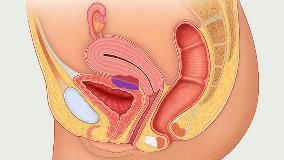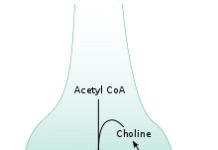Ovarian cysts are fluid-filled sacs in the ovary. They are common and usually form during ovulation.
Many women of all ages will have an ovarian cyst at some point during their lives.
Most ovarian cysts are small, harmless, and resolve without treatment.
In some instances, a cyst will cause symptoms, especially if it ruptures or grows larger, and will require medical intervention, including removal of the cyst or the ovary.
Causes and Risk Factors of Ovarian Cysts
- Drugs that stimulate ovulation, including the fertility drug clomiphene (Clomid)
- Pregnancy
- Endometriosis
- A severe pelvic infection
- A previous ovarian cyst
Types of Ovarian Cysts
Most ovarian cysts develop as a result of your menstrual cycle. Your ovaries normally grow follicles (cyst-like structures) each month. Follicles produce the hormones estrogen and progesterone and release an egg when you ovulate. If a normal monthly follicle keeps growing, it's known as a functional cyst.
There are two types of functional cysts:
- Follicular cyst This cyst begins when the follicle doesn't rupture or release its egg but continues to grow.
- Corpus luteum cyst When a follicle releases its egg and begins producing estrogen and progesterone, it's called the corpus luteum. Sometimes fluid accumulates inside the follicle, causing the corpus luteum to grow into a cyst.
- Dermoid cysts Also known as teratomas, these contain tissue, such as hair, skin, or teeth because they form from embryonic cells.
- Cystadenomas These cysts develop on the surface of the ovary and may be filled with a watery or mucous substance.
- Endometriomas These cysts develop as a result of endometriosis — a condition in which uterine cells grow outside the uterus.
How Are Ovarian Cysts Diagnosed?
A cyst on your ovary can be found during a pelvic exam.
Depending on the size of the cyst and whether it’s fluid-filled, solid, or mixed, your doctor may recommend any of the following tests to determine the type of cyst you have.
- Pregnancy test If positive, it may suggest you have a corpus luteum cyst.
- Pelvic ultrasound Your doctor may use ultrasound images to confirm the presence of a cyst, help determine its location, and detect whether it's solid, filled with fluid, or mixed.
- Laparoscopy With the use of a laparoscope (a long, thin tube with a high-resolution camera attached to the end) inserted through a small incision in your abdomen, your doctor can see your ovaries and remove an ovarian cyst.
- CA 125 blood test If your cyst is partially solid and you're at high risk of ovarian cancer, your doctor may order this test. Blood levels of a protein called cancer antigen 125 (CA 125) are often elevated in women with ovarian cancer. Noncancerous conditions such as endometriosis, uterine fibroids, and pelvic inflammatory disease can also cause elevated CA 125 levels.
Prognosis of Ovarian Cysts
Treatment and Medication Options for Ovarian Cysts
Your doctor may want to wait and see if the cyst goes away within a few months. This is typically the best option when you have no symptoms and you have a small, fluid-filled cyst, regardless of your age. Your doctor may also recommend follow-up pelvic ultrasounds at intervals to see if your cyst changes in size.
Other options include:
- Hormonal contraceptives such as birth control pills can keep cysts from recurring. But birth control pills won't shrink an existing cyst.
- If your cyst is large, doesn't look like a functional cyst, is growing, continues through two or three menstrual cycles, or causes pain, your doctor may suggest having it surgically removed. Some cysts can be removed without removing the ovary (ovarian cystectomy), but in other cases, your doctor may suggest that you remove the affected ovary (oophorectomy).
Prevention of Ovarian Cysts
Research and Statistics: How Many Women Have Ovarian Cysts?
Resources We Love
American College of Obstetricians and Gynecologists (ACOG)
ACOG is a top group of physicians dedicated to women's health. On their website you'll find a wealth of reliable info. Their Frequently Asked Questions page on ovarian cysts can help you understand symptoms, diagnosis, treatment, and they also provide a helpful glossary of terms.
Mayo Clinic
A go-to source for up-to-date medical information, the Mayo Clinic provides a comprehensive overview of ovarian cysts, from symptoms to complications to tips on how to prepare for an appointment with your physician or gynecologist.
Office on Women’s Health (OWH)
Established within the U.S. Department of Health and Human Services, the OWH's website offers detailed information on all topics related to women’s health.
Additional reporting by Cathy Cassata.
Editorial Sources and Fact-Checking
- Ovarian Cysts. U.S. Department of Health and Human Services Office on Women’s Health. April 1, 2019.
- Ovarian Cysts: Symptoms & Causes. Mayo Clinic. August 26, 2020.
- Ovarian Cysts: Diagnosis & Treatment. Mayo Clinic. August 26, 2020.
- Ovarian Cysts. MedlinePlus. August 25, 2020.
- Ovarian Torsion. Yale Medicine.
- Management of Ruptured Ovarian Cyst. Johns Hopkins Medicine.
- Farghaly SA. Current Diagnosis and Management of Ovarian Cysts. Clinical and Experimental Obstetrics & Gynecology. 2014.
- Ross E, Fortin C. Ovarian Cysts. Cleveland Clinic Disease Management. August 2016.
- Polycystic Ovary Syndrome (PCOS). Johns Hopkins Medicine.













































